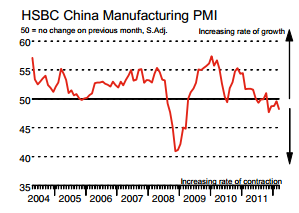Economic events scheduled for today
14:00:00 EUR Consumer Confidence
The Consumer Confidence released by the European Commission is a leading index that measures the level of consumer confidence in economic activity. A high level of consumer confidence stimulates economic expansion while a low level drives to economic downturn. A high reading is seen as positive (or bullish) for the EUR, while a low reading is seen as negative (or bearish).
14:00:00 USD Existing Home Sales (MoM)
The Existing Home Sales, released by the National Association of Realtors provide an estimated value of housing market conditions. As the housing market is considered as a sensitive factor to the US economy, it generates some volatility for the USD. Generally speaking, a high reading is positive for the Dollar, while a low reading is negative.
14:00:00 USD Philadelphia Fed Manufacturing Survey
The Philadelphia Fed Survey is a spread index of manufacturing conditions (movements of manufacturing) within the Federal Reserve Bank of Philadelphia. This survey, served as an indicator of manufacturing sector trends, is interrelated with the ISM manufacturing Index (Institute for Supply Management) and the index of industrial production. It is also used as a forecast of The ISM Index. Generally, an above-the-expectations reading is seen as positive for the USD.
23:50:00 JPY Tertiary Industry Index (MoM)
Tertiary Industry Index released by the Ministry of Economy, Trade and Industry indicates the domestic service sector in Japan such as information and communication, electricity, gas heat and water, services, transport, wholesale and retail trade, finance and insurance ,and welfare. As the Japanese economy relies upon its exports, this event is expected to generate low volatility for the JPY. Generally, a high reading is positive (or bullish) for the JPY, while a low reading is negative (or bearish).
Euro Dollar
EURUSD (1.3115) The euro was range bound against major currencies in Asia on Thursday as traders looked to a G20 meeting aimed at beefing up the International Monetary Fund’s debt-crisis war chest. The single currency was changing hands at $1.3115 in Asian trade, down slightly from $1.3120. It rose to 106.71 yen from 106.59 yen. The dollar firmed to 81.36 yen from 81.23 yen. The focus now is on whether the G20 meeting of finance ministers and central governors due from later today to tomorrow could agree on expanding the IMF funding, a safety net for the eurozone, to $500.0 billion,
The Sterling Pound
GBPUSD (1.6012) The pound hit a 19-month high against the euro yesterday as hopes faded for more stimulus by the Bank of England to boost the economy in the face of stubbornly high inflation.
Minutes of the Bank’s Monetary Policy Committee April meeting showed Adam Posen dropped his call for an extra £25billion in money printing, leaving only David Miles among the nine-member committee calling for the quantitative easing programme to be increased to £350billion.
QE is seen as negative for the UK currency. The euro dipped 0.7 per cent to below 82p, its lowest level since August 2010, with the pound worth more than e1.22.The minutes were released a day after figures showed the first rise in the cost living for five months, with the consumer price index up to 3.5 per cent in March.
Asian –Pacific Currency
USDJPY (81.39) The yen weakened against the USD Thursday after Japan swung back to a trade deficit in March, with the greenback little-changed against the euro ahead of a keenly awaited Spanish debt auction later in the day.
Against the yen, the greenback rose to ¥81.39 from ¥81.21 Wednesday. The rise came after data released earlier in the day showed a trade deficit of ¥82.6 billion in March compared with a surplus of ¥170.9 billion in February, albeit smaller than the ¥223.1 billion shortfall expected in the monthly trade balance by economists.
AUDUSD (1.0358) The Australian dollar has fallen by a third of a US cent after a private sector survey showed domestic business confidence fell in the first three months of 2012. On Thursday, the Aussie was trading at 103.58 cents, down from 103.85 cents on Wednesday afternoon.
The currency slipped late on Thursday morning after a survey showed a drop in business confidence. The NAB business survey showed confidence fell into negative territory at minus one points in the March quarter, from plus one points in the previous quarter. The result indicates the number of businesses who are negative about the outlook outweigh those who are positive.
Gold
Gold (1640.29) Gold held steady in a narrow range on Thursday, as investors stood on sidelines and awaited a key Spanish debt auction later in the day amid worries that the euro zone debt crisis could flare up again. Concerns about Spain’s finances and banking sector pushed up safe-haven U.S. Treasuries and German Bunds, and caution prevailed in most markets.
Gold, though traditionally seen as a haven during times of economic and political turmoil, has moved largely in tandem with riskier assets and against the dollar. Gold was little changed at $1,640.29 an ounce by 0303 GMT, hovering in a $3 range around $1,640.
Crude Oil
Crude Oil (102.71) edged higher in Asian trade Thursday but prices were capped ahead of a Spanish government bond auction amid fears anaemic demand could reignite jitters over the eurozone debt crisis. Prices were supported by renewed concerns over Middle East supply owing to the stand-off between key producer Iran and the West over Tehran’s nuclear programme.
New York’s main contract, West Texas Intermediate crude for delivery in May was up four cents to $102.71 per barrel while Brent North Sea crude for June gained 38 cents to $118.35 in morning trade. Talks between Iran and the West at the weekend were described as “positive” by both parties but international leaders have been quick to insist a great deal was expected of the Islamic republic at the next meeting in Baghdad on May 23.
Yesterdays EIA inventory showed a continuing glut of oil with inventories rising 3.6million barrels on low demand.



